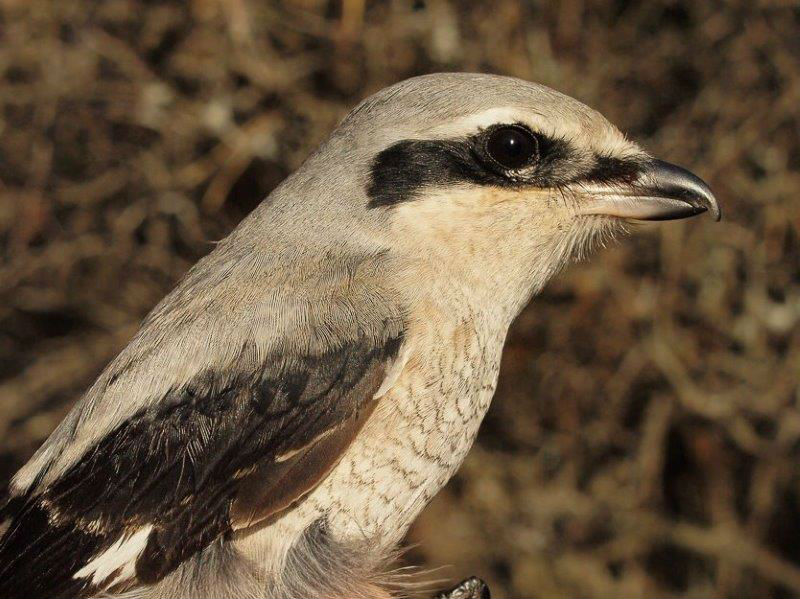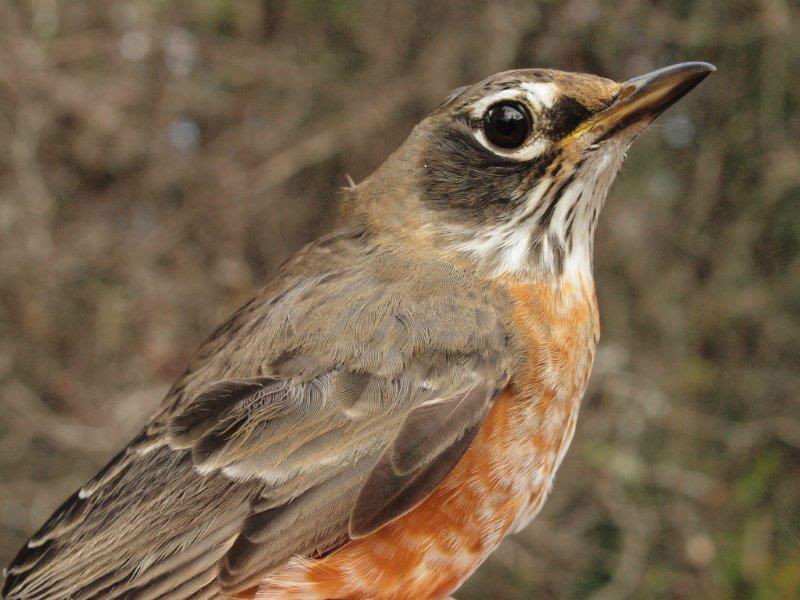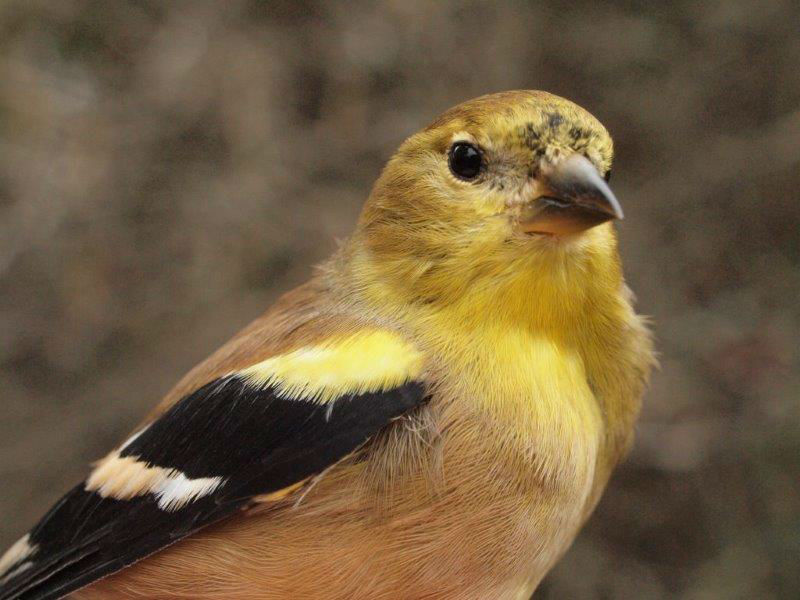Week 13 (October 24-30, 2015)
 |
| THIS WEEK | THIS FALL | 2006 TOTAL | SITE TOTAL | |
|---|---|---|---|---|
| # birds (and species) banded | 208 (24) | 3005 (83) | 4491 (90) | 57698 (119) |
| # birds (and species) repeat | 36 (10) | 688 (47) | 996 (61) | 11697 (86) |
| # birds (and species) return | 3 (3) | 57 (21) | 183 (34) | 1855 (51) |
| # species observed | 62 | 149 | 164 | 213 |
| # net hours | 526.2 | 6615.1 | 10105.4 | 112905.7 |
| # birds banded / 100 net hours | 39.5 | 45.4 | 44.4 | 50.9 |
Banders-in-charge: Simon Duval, Gay Gruner
Assistants: Michel Beaupré, Nicolas Bernier, Pascal Berthelot, Marc Boisvert, Manon Bourdon, Alexander Boyer, Martha Bromby, Luke Currin, David Davey, Dominique Dufault, Alison Hackney, Lisa Keelty, Lorenzo Kleine, Marcel Lebeau, Barbara MacDuff, Asya Malinova, Francine Marcoux, Betsy McFarlane, Phillip Mercier, Emma Nip, Catherine Russell, Paule Schetagne, Clémence Soulard, Elise Titman, Rodger Titman, Christiane Tremblay, François Villeneuve
Notes: Week 13 has traditionally been the end of our Fall Migration Monitoring Program, going back to our first full season in 2005. However, in recent years it has become apparent that the tail end of migration for some of our priority species (e.g., American Tree Sparrow, Slate-colored Junco, Fox Sparrow) is increasingly often carrying over into early November, and as such, stopping on October 30 leaves us with an incomplete picture of their numbers. Because of that, we tested out an “informal” extra week last fall, and this year will be including week 14 as an official part of the season. All the same, the totals as of this week are of particular interest with respect to comparing results with previous seasons.
As has been the case for much of this fall, the number of birds banded this week was a bit below average, but in this case just enough to lift our total past the 3000-bird threshold. Even so, it is the third-lowest season total, ahead of only 2011 (2792) and 2007 (2877) – and when considering birds banded per 100 net hours, this fall (45.4) is only marginally ahead of the low point of 43.7 in 2011. On the other hand, the number of species banded in fall has tended to be quite consistent (between 74 and 78 in nine of ten previous years), so the 83 this season (second only to 86 in 2012) was a pleasant surprise. Similarly, the number of species observed for the season (149) is above average, as were the 62 species this week. Once the season wraps up after week 14, we will review our data in greater detail as part of the preparation of our annual report on MBO activities.
As noted last week, late fall still brings us a number of “new” birds. This week we banded Northern Shrike (the first for 2015), European Starling, and Red-winged Blackbird for the first time this fall – the latter two species coming on the final day! The shrike was also observed for the first time this fall, as were Snow Goose, Common Merganser, and Rough-legged Hawk. The hawk also waited until the very last morning to show up, and was our first for 2015 overall.
| # individuals banded | mean # individuals observed daily |
|---|---|
| 1. American Robin (117) [1] | 1. American Robin (630) [1] |
| 2. American Tree Sparrow (20) [6] | 2. European Starling (281) [5] |
| 3. White-throated Sparrow (15) [2] | 3. Red-winged Blackbird (185) [2] |
| 4. Ruby-crowned Kinglet (6) [3] | 4. Canada Goose (155) [3] |
| 4. Northern Cardinal (6) [-] | 5. Common Grackle (99) [4] |
| 4. Slate-colored Junco (6) [8] | 6. American Crow (49) [7] |
| 7. Hermit Thrush (5) [5] | 7. Snow Goose (43) [-] |
| 7. Fox Sparrow (5) [9] | 8. White-throated Sparrow (27) [6] |
| 9. Purple Finch (4) [-] | 9. Ring-billed Gull (22) [-] |
| 10. Black-capped Chickadee (3) [-] 10. Song Sparrow (3) [7] 10. Swamp Sparrow (3) [9] |
10. Mourning Dove (17) [-] |
Sure enough, the late fall influx of American Robins hit us with full force this week, with 117 individuals banded, almost six times as many as the runner-up (American Tree Sparrow). While that tally is just short of the week 13 record of 125 American Robins banded, the relatively low numbers in previous weeks leaves the season total to date at 211, slightly below the ten-year mean of 227 for fall. For American Tree Sparrow, both this week’s count and the season total of 29 are below average. White-throated Sparrow finished the traditional 13-week season with an above-average weekly total, but even so the season total is 318, below the long-term mean of 342. Even so, White-throated Sparrow was banded more than any other species this fall, followed by Ruby-crowned Kinglet (in fourth place this week, with a season total of 255), Northern Saw-whet Owl (245 – see below for more details), and American Robin. In a season with many lows, Northern Cardinal stands out as a happy exception, with a season total of 24 after this week’s influx, topping the previous high of 21 set in 2012. Rounding out the three-way tie for fourth place this week was Slate-colored Junco with a meager 6 individuals, for a season total to date of 66. Although this is far below the ten-year mean of 202, it is consistent with low counts in the past two “odd” years (58 banded in 2011 and 60 in 2013). Keeping with the theme of sparrows in low numbers, Fox Sparrows were banded this week in roughly half their normal abundance, and the 9 banded this fall is the fewest since 5 in 2011. Tied with Fox Sparrow was Hermit Thrush; it too has a season total (34) that is the lowest since 2011. Wrapping up the sparrow discussion, the season total for Song Sparrow (146) rebounded slightly from last year’s record low, while this week’s Swamp Sparrows brought the total up to only 24, the fewest since 20 in 2010. But to wrap up on a more positive note, the season total for Black-capped Chickadee (47) was fairly typical for a non-irruption year, and the continuing migration of Purple Finches has added up to 33 for the season, far more than usual, and only behind the high count of 44 in 2012.
As with the banding results, American Robin dominated observations this week by a wide margin. The mean daily count of 630 this week was second only to the record high of 776 last year at this time; daily totals ranged from a low (!) of 450 to a high of just more than 800. The other species in the top five are the same as last week, although shuffled up a bit; all were also present in large numbers, and most often observed as large flocks passing overhead (in the case of the songbirds, sometimes stopping to perch in some of the taller trees on site). All of these species are typically dominant in week 13, although in every previous year American Crow was among the top five. This fall crow numbers have been below average, and the count this week was only enough to reach sixth place. Snow Geese were on the move early enough this year to get captured in our week 13 results; some years they do not pass by until November (another species that may be documented better by extending to week 14). White-throated Sparrows have been becoming increasingly common in late October, and this week’s mean daily count of 27 individuals is the highest ever for this period. Ring-billed Gull numbers were above average this week, while the count of Mourning Doves was by far the highest of the season, and nearly double the ten-year mean for week 13, although below the record high mean daily count of 36 in this week in 2005.
As for the owl banding program, it continued well again this week. The 29 Northern Saw-whet Owls banded this week was remarkably close to the 30 banded in this period in 2011, 2012, and 2014! However, this year’s total is now up to 243 (245 if counting the two banded as part of daytime operations), breaking the record of 235 banded in 2012. Curiously though we have caught only three foreign-banded owls this fall, roughly one-third as many as we would expect based on previous experience (prior to this season, they represented 3.6% of our captures; this fall just 1.2%).


Comments are closed